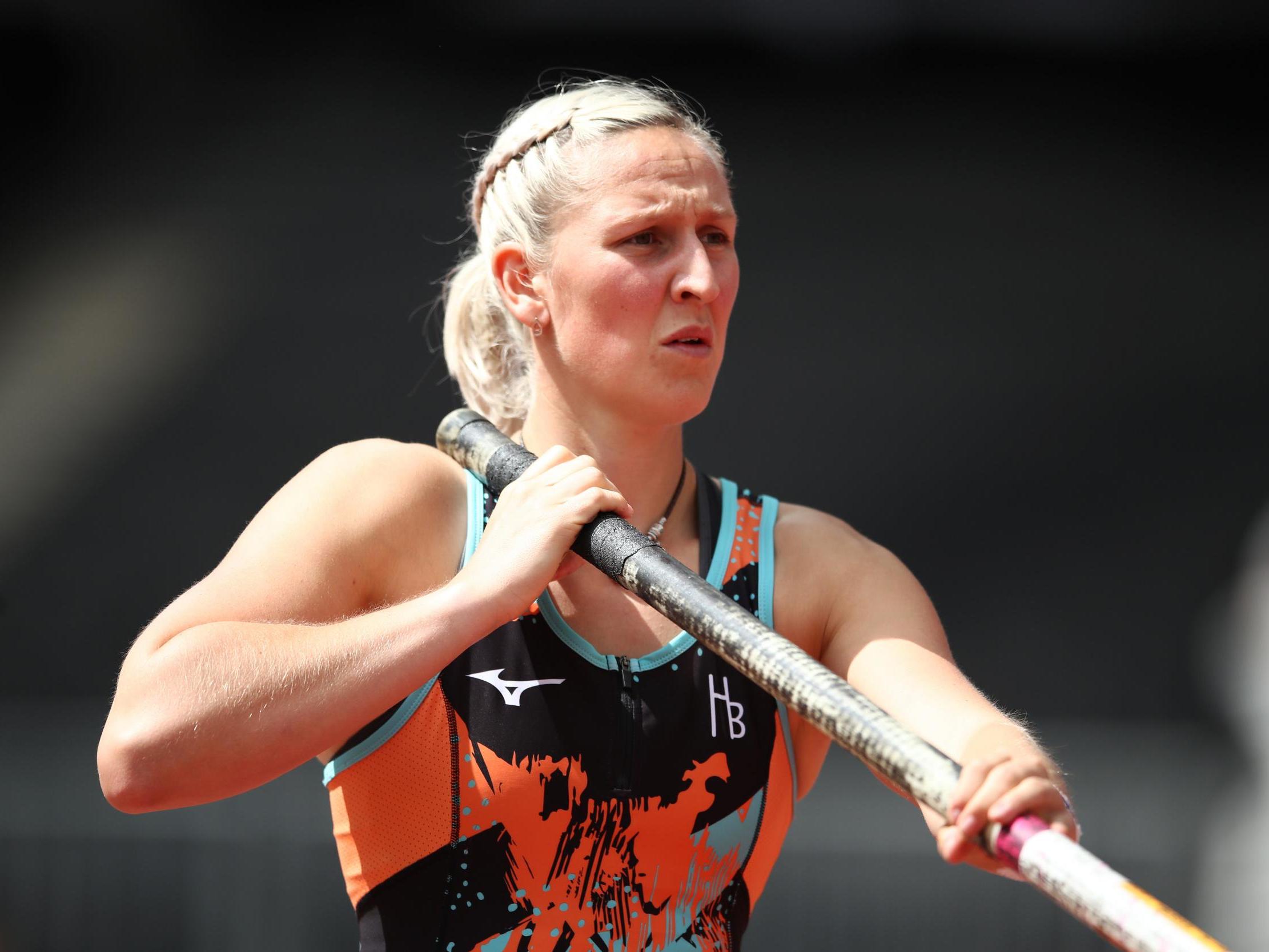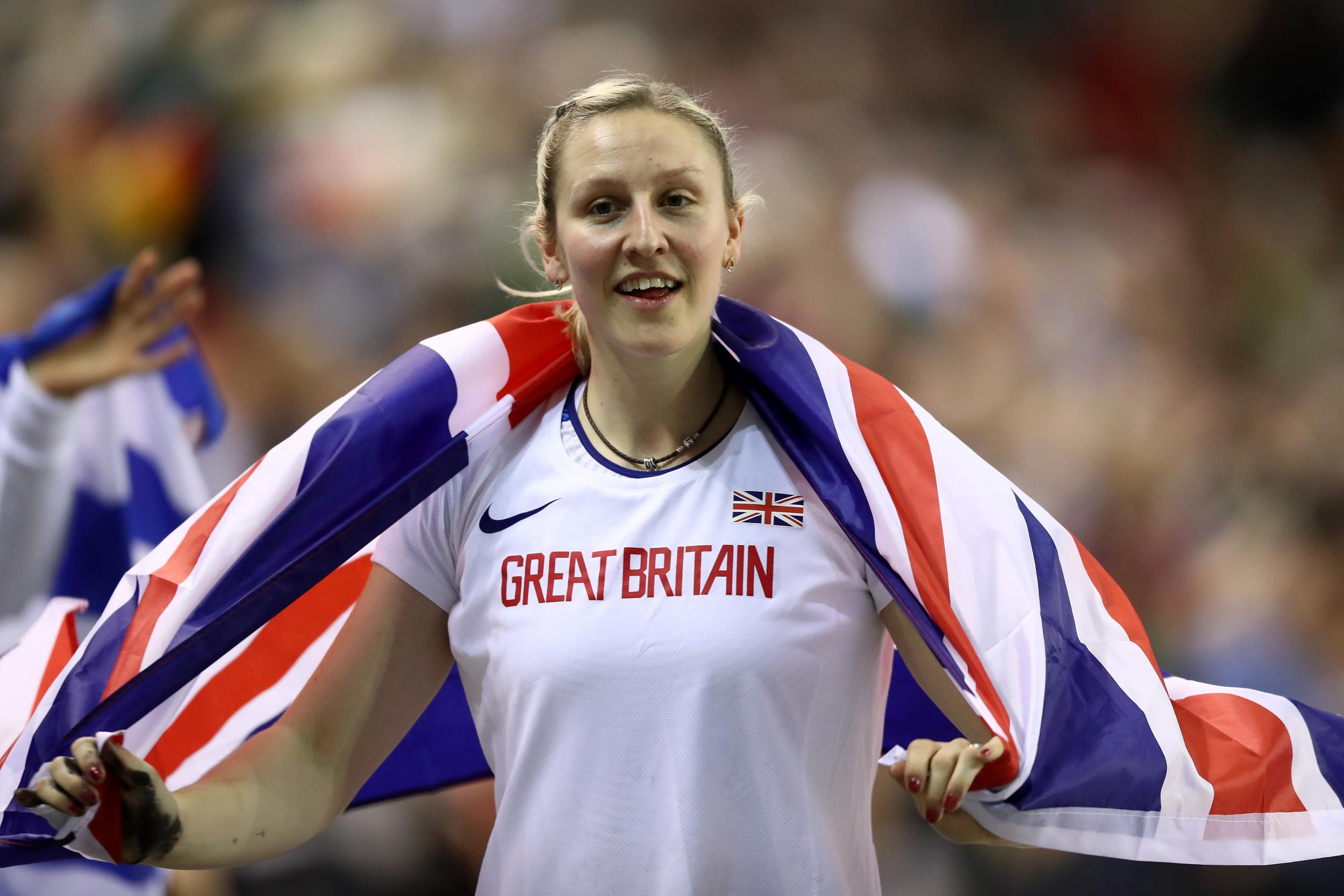Pole vaulter Holly Bradshaw: ‘Getting dropped by Nike was tough, I was getting down’
Exclusive interview: The 27-year-old is a medal contender ahead of the World Athletics Championships in Doha having come through a challenging year off the track

These are precarious times to be an athlete, particularly if your trade involves hurling yourself through the sky as high or as far as is humanly possible. After next week’s World Athletics Championships in Doha, the IAAF will announce its new revamped Diamond League for 2020 with the aim of making athletics a more attractive TV product; the end result is that four events will be cut from the schedule, and although no one yet knows which are for the chop, chief executive Jon Ridgeon delivered a warning when he suggested the field events need “bringing to life”.
For a lot of athletes the Diamond League is a key source of revenue, awarding prize money from $1,000 up to $50,000 for event winners. The changes are a looming cloud that Britain’s No1 pole vaulter, Holly Bradshaw, is all too aware of, so it’s times like this on the eve of a major championship when it helps to be a little philosophical. “Obviously I’ve chatted with a lot of the girls and we’re hopeful that pole vault isn’t going to get cut,” she tells The Independent. “For me it will be upsetting if pole vault gets cut, but there are other opportunities, there are so many awesome meets out there.”
Bradshaw has needed that sense of indestructible optimism before. In January, Nike decided not to renew her sponsorship deal despite following a season in which she produced some of the performances of her life, winning gold at the Athletics World Cup in London and bronze at the European Championships in Berlin.
It left her with the feeling that Nike’s decision may have been based on factors outside performance. Bradshaw’s powerful build does not necessarily conform to the typical female pole-vaulter aesthetic, and she has little interest in the Instagram culture that many athletes deploy to market themselves, something sponsors now value so highly. Even for an athlete challenging for global medals, finding a new backer was not a given.
“We approached quite a few other companies, and when no one seemed interested it was tough. I was getting a little bit down,” Bradshaw says. ”I was in great shape, I was jumping well, especially during the indoor season when I was jumping 4.80m and competing with the best girls in the world.”
Then out of the blue in stepped the Japanese brand Mizuno. The company had little hinterland in sponsoring pole vaulters, so it had to design bespoke kit and running spikes for the job. “I was really lucky that Mizuno wanted to support me and they’ve been incredible. They’ve treated me so well, they’ve made me feel wanted.”
The reality is that bar a few highly marketable exceptions, athletes know that to take up the sport is to embark upon a journey self-sacrifice in which the greatest rewards are not financial but something more spiritual; the gratification of self-improvement, the satisfaction of hard work, the eventual fruition of it all. The ever-more precarious nature of the sport has become a part of the deal.

“Personally I feel like a career in athletics is becoming a little bit harder,” Bradshaw says. “It doesn’t seem like there’s many sponsors that want to invest in athletics, so for athletes it’s about putting yourself out on the circuit because that’s how you make a living. Commercial sponsorship doesn’t seem to be there. It’s a bit sad because with Subway, for example, they marketed me really well and that raised the profile of the sport and of my event. Young kids would see me and think what does she do, pole vault, and think they might want to get into that. I think that’s where it’s lacked a little bit.”
Now aged 27, with a consistent stream of top-six finishes on the world and Olympic stage behind her, Bradshaw is entering her peak and approaching both next week’s Worlds and Tokyo 2020 with big aspirations. Women’s pole vault is a highly competitive but open field, with at least a handful of athletes who on their day can clear the magic 4.80cm – the height at which Bradshaw fell short in Rio, eventually finishing fifth. If all falls into place, a first major global medal is within her realm.
Then again, it is an unpredictable discipline. Pole vault is a little like music, a product of rhythm and timing, but to perform on the biggest stage you need to turn up the volume. That means speed on the runway, and it’s something which elevates Bradshaw into the elite few. The goal in Doha is to be on the podium, she says, and the way to win one is not to think about it. “I think I got stuck in a rut in 2017 chasing medals, wanting to jump whatever, and it would just get me in such a negative head space. Now I focus on being fast on the run and that seems to be what helps me jump the highest. Hopefully jumping as high as possible will be enough for a medal.”
Join our commenting forum
Join thought-provoking conversations, follow other Independent readers and see their replies
Comments
Bookmark popover
Removed from bookmarks